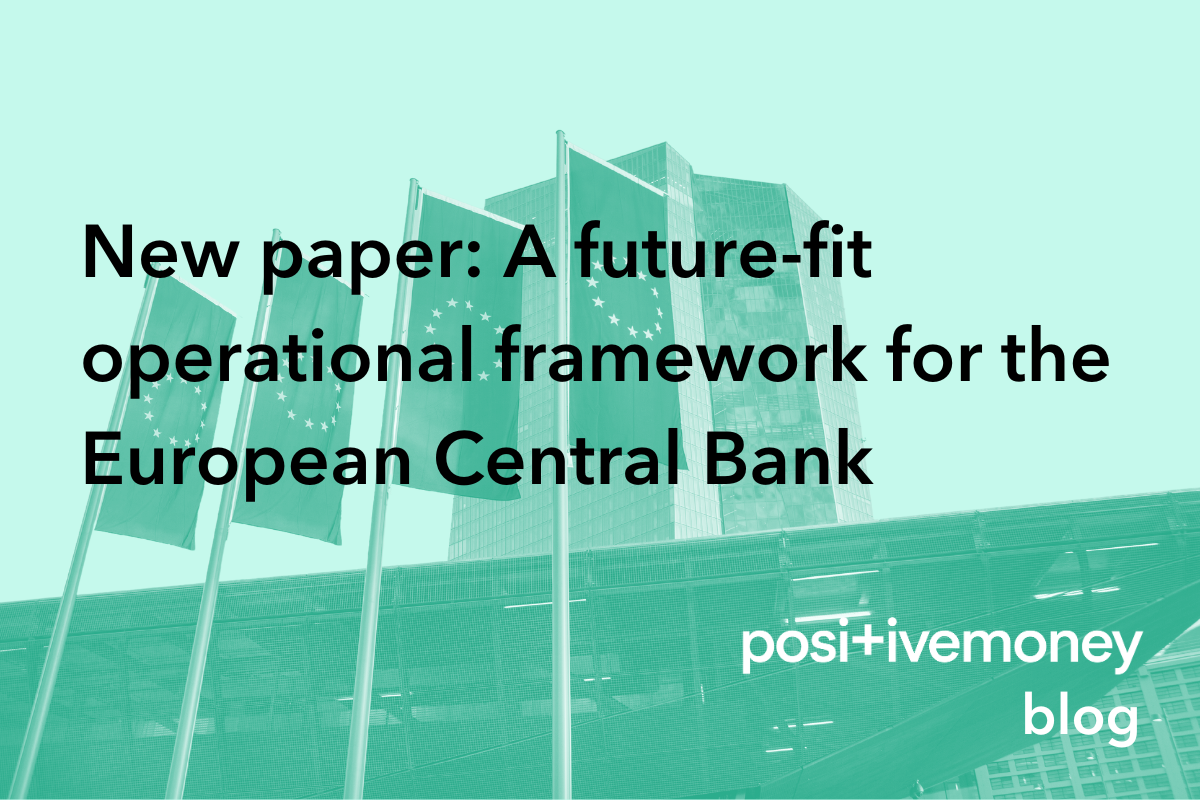
EUUK
3 July 2025
Positive Money Europe has published our new policy paper, ‘A future-fit operational framework for the European Central Bank’. In this document we take a critical look at the recently announced revision of the European Central Bank's operational framework, and we offer an alternative proposal.
The new ECB’s operational framework
The operational framework encompasses the measures and intermediary targets that central banks use to implement their stance on monetary policy. These include, among others, how liquidity is provided, which counterparties are eligible and the rules on collateral use.
In March 2024, the European Central Bank (ECB) announced a revision of its operational framework.
The new framework has three main characteristics:
The operational target – which is the short-term money market rate – will be steered between the main refinancing operations rate (a rate at which banks can borrow on a weekly basis against eligible collateral) and the deposit facility rate (the interest rate at which banks’ deposits within the Eurosystem are remunerated).
Banks’ aggregate liquidity needs will be met primarily through refinancing operations based on banks’ demand.
Remaining liquidity needs will be addressed through a diverse range of instruments, including a structural portfolio of securities and longer-term refinancing operations. However, the ECB has not yet defined details on these.
Problems with the new framework
Our paper assesses the ECB’s revised operational framework and formulates three main critiques:
The framework is not robust: its main characteristics are not compatible with monetary policy interventions that substantially increase the ECB’s balance sheet in the future. Hence, it is not an operational framework ‘for all seasons’.
Its priorities are misplaced: aiming for a lean balance sheet to spur “market discipline” fails to take into account how the latter failed before the global financial crisis and how money markets have changed over the last few decades.
This misplaced prioritisation limits policy space for achieving the ECB’s objectives, including supporting the green transition.
A roadmap for the future
We propose an alternative framework, one that aims for an ample and flexible balance sheet. Most of the liquidity provision would be achieved through a securities portfolio and green-targeted longer-term refinancing operations, which would be supply-determined by the ECB. It would also apply a flexible remuneration to bank reserves through a differentiated (or ‘tiered’) remuneration, so as to avoid undesirable windfall profits when interest rates are too high.
Our proposed framework entails several benefits: promoting stability in sovereign bond markets, enhancing monetary policy transmission, accommodating financial stability interventions, providing more policy space to support the green transition, and enabling robust responses by the ECB to increasingly frequent shocks.
You can read the whole report by clicking on the cover below.
